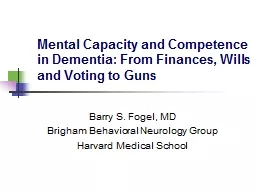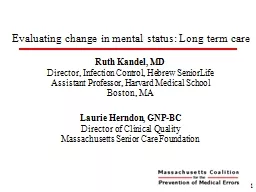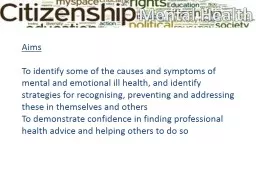PPT-Mental Capacity and Competence in Dementia: From Finances,
Author : liane-varnes | Published Date : 2017-03-20
Barry S Fogel MD Brigham Behavioral Neurology Group Harvard Medical School Themes of This Presentation Organizing Principles Executive Function and Metacognition
Presentation Embed Code
Download Presentation
Download Presentation The PPT/PDF document "Mental Capacity and Competence in Dement..." is the property of its rightful owner. Permission is granted to download and print the materials on this website for personal, non-commercial use only, and to display it on your personal computer provided you do not modify the materials and that you retain all copyright notices contained in the materials. By downloading content from our website, you accept the terms of this agreement.
Mental Capacity and Competence in Dementia: From Finances,: Transcript
Download Rules Of Document
"Mental Capacity and Competence in Dementia: From Finances,"The content belongs to its owner. You may download and print it for personal use, without modification, and keep all copyright notices. By downloading, you agree to these terms.
Related Documents














